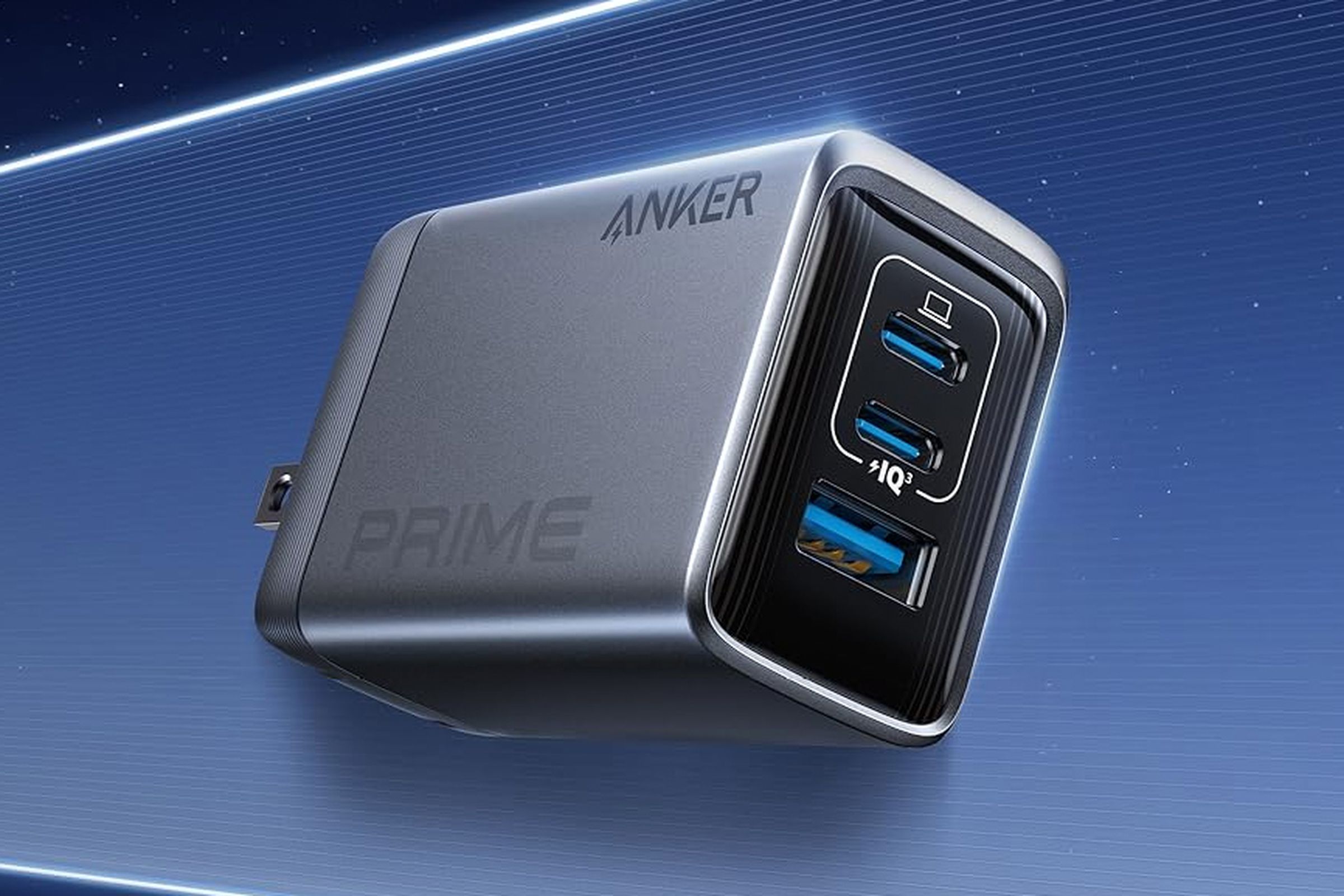The most notable upgrade on Anker’s new Prime Charger isn’t how much power it can deliver; it’s the redesigned folding plug that now has thicker prongs with a “frosted finish” that the company claims will help the six-ounce charger actually stay plugged into a wall outlet.
Being able to charge multiple devices from a single wall charger, including laptops, is one of the many improvements delivered by a switch from silicon to gallium nitride-based components. But the new generation of GaN chargers with more power and USB ports sometimes struggle to stay plugged in due to their size and weight.
Anker’s previous solution to that problem was to include a silicone suction cup accessory with its larger GaN chargers designed to help secure them to a wall outlet’s smooth face plate. Its new Anker Prime Charger has been redesigned with a center of gravity located closer to the plug and thicker, textured prongs that will hopefully be less likely to slip out of an outlet under the charger’s weight.
The $84.99 Anker Prime Charger includes two USB-C ports capable of outputting 100W and a single USB-A port with a maximum output of 22.5W. That 100W is the charger’s maximum output, however, which is shared across the two USB-C ports when both are in use. With devices plugged into all three of the charger’s USB ports, its total shared power output drops to 89W, which is still more than enough to simultaneously charge a phone, a smartwatch, and a pair of headphones.
Anker also announced several other additions to its Prime lineup today, including a pair of desktop chargers that include the ability to switch between different charging modes to prioritize devices and ports, and app connectivity allowing power output to be monitored from a mobile device.

Leave a Reply